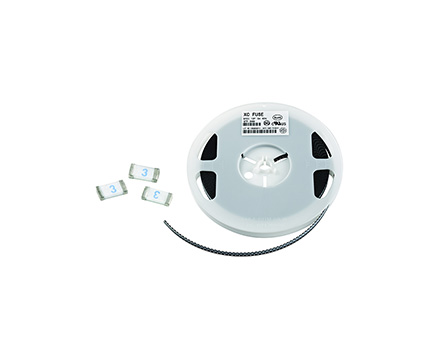
Traditional fuses are installed in circuits. When an overcurrent occurs due to a fault or abnormality in the circuit, the fuse itself melts to cut off the current and protect the circuit. However, due to the fact that traditional fuses can only protect once and need to be replaced if burned out, some products still cannot resume operation after troubleshooting or abnormal overcurrent disappears. As a new type of overcurrent protection device, the self recovery fuse has the function of automatic recovery, which can meet the performance requirements of similar applications.
The self recovery fuse is connected in series in the circuit, and under normal circumstances, it is in a low resistance state to ensure the normal operation of the circuit; When a circuit experiences a short circuit or abnormally high current flows in, the self-heating of the self-healing fuse increases its impedance and limits the current to a sufficiently small amount, providing overcurrent protection.
Self recovery fuses mainly protect against abnormal currents in the circuit. Under normal working conditions, its impedance is very small, like a wire connected in series in a circuit; Once a circuit experiences a fault or short circuit, its internal resistance value will change as the current value in the circuit increases until it reaches protection. After the fault is eliminated, its internal resistance value will return to a low resistance state and continue to work. Due to the self-healing performance of self-healing fuses, which saves manufacturers a lot of trouble and is also a relatively economical choice, self-healing fuses have become the preferred component for overcurrent protection in many electronic products such as PCB boards.
Read recommendations:
motorsport fuse and relay box.Self recovery fuse selection guide, must see
Intelligent fuse.temperature switch thermostat thermal protector fuse